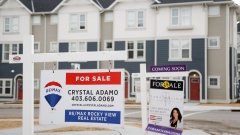Apr 24, 2024
How the US Tax System Stole $600 Billion From Black Americans
, Bloomberg News
(Bloomberg) -- At the turn of the 20th century, Anthony Fleming and J.R. Rooks, two Black men who had been driven off their farmland by White supremacist mobs, founded a town with the aim of giving Black Americans access to land ownership.
By 1911, Edmonson, Arkansas, covered 30 square miles and had stores and a bank, hotel and post office. One historian called it a “destination for Black migrants at a time when Jim Crow laws and disenfranchisement had stymied opportunities for Blacks elsewhere.”
Just two decades later, it was over. This time, a mob wasn’t to blame. It was taxes.
Worried that the upwardly mobile Black residents of Edmonson would make Black laborers they relied upon feel dissatisfied, nearby White plantation owners plotted to seize the town. The county quietly created a special-improvement district that encompassed Edmonson, allowing it to assign taxes on all its lots. Residents’ failure to pay these bills—ones they were purposefully never informed of—cleared the way for the state to seize control of the land, which it then deeded to one of the plantation owners who had concocted the scheme. Suddenly, Black residents were now living on land controlled by someone who demolished their houses and closed their businesses.
The Edmonson tale is one of many in The Black Tax: 150 Years of Theft, Exploitation, and Dispossession in America (University of Chicago Press, $35, publishing on April 24) which painstakingly outlines how bureaucracies in the US cemented the country’s racial wealth gap through a framework of aggressively unfair municipal and state taxes.
“This history sheds new light on the forces generating economic inequality in America and the racial character of those inequalities,” writes author Andrew W. Kahrl, professor of history and African American studies at the University of Virginia.
Kahrl’s deeply researched book is dense with facts about municipalities across the country, the intricacies of how they collected taxes and distributed those funds, and the economic forces at play throughout more than a century of US history. It’s especially compelling when it pairs those details with human stories of their impact.
The Black Tax begins with the era of Jim Crow laws. In the late 19th and early 20th century, these were used to doubly harm Black landowners: first, by artificially inflating property value estimates used to calculate their taxes and therefore overcharge them; and second, by wielding landowners’ inability to make payments as a weapon to seize their properties.
Take Hillery Thomas Stewart Sr., who lost 24 acres of land in a tax sale “under dubious circumstances” in 1920. Stewart, the great-great-grandfather of George Floyd—whose murder a century later would spark global protests—owed just $18.83 in taxes. Losing the land plunged the family back into poverty.
In addition to individual anecdotes, The Black Tax also lays out the long-term impact of policies directed at Black populations. An unpaid tax bill—either because of financial hardship or trickery, as in Edmonson—led to the seizure of many of the 11 million acres Black people lost in the 20th century. The compounded value of that land amounts to $326 billion in today’s dollars, according to a 2022 American Economic Association paper.
Kahrl also offers numerous examples to debunk a racist trope perpetuated by White Southern elites and segregationists that still echoes today, namely that Black people don’t pay their fair share in taxes. Kahrl shows that in many instances, they have grossly overpaid for decades.
Tax assessors, “under no compulsion to tax fairly and accurately,” often increased the value of property owned by Black residents far beyond its actual worth, Kahrl writes. In the late 1920s, the assessor in Prince George’s County, Maryland, raised the assessed value of property owned by a Black land developer to 20 times the value of similar lots owned by White people. “Some White assessors made no secret of their intentions, using their powers as a weapon against Black mobility,” Kahrl writes.
This has added up across the US. From 1870 to 2020, Black Americans were overtaxed by more than $275 billion in 2023 dollars, according to a conservative estimate based on findings by economists Carlos Avenancio-León and Troup Howard.
Despite paying more than their share, residents in many Black neighborhoods never reaped benefits from those higher taxes: Schools were underfunded, roads weren’t paved and garbage went uncollected. Some of that disparate treatment pushed residents into advocacy and activism.
“It was through their encounters with local authorities that African Americans formed their understandings of power and devised modes of resistance,” Kahrl writes. “It was through local fights over matters of public concern—and, invariably, over matters of public spending—that communities became organized.”
In summer 1966, a group of Black teens in Edwards, Mississippi, began picketing outside the town’s pool, from which they were barred. Other local Black leaders hatched plans for a work strike and boycott of White-owned businesses in the area, citing poor conditions in their neighborhoods. Nearly half of the 18 demands Black people in Edwards put to White officials had to do with public spending and taxation.
For their efforts, organizers and their supporters were punished—with taxes. The tax assessor’s office targeted those who had participated in the boycott with tax hikes that left some paying roughly twice what they had previously paid. Overall, the value of Black-owned property in town jumped by 51% year over year, while the value of land owned by White neighbors increased by 5.4%.
These egregious practices didn’t end when advances on racial equity were made elsewhere. “Of the local powers in Whites’ arsenal, few made it through the civil rights revolution of the 1960s more unscathed than local taxing powers,” writes Kahrl.
Modern-day investors are increasingly seizing on tax system inequalities to make money, too.
In 2010, Vicki Valentine was ousted from the West Baltimore home she had inherited from her father, who paid off its mortgage in 1984. Valentine had missed a $362 water bill five years earlier and the city had auctioned a lien on the property, as permitted under state law. The cost to remain in her home jumped to $3,600, and she couldn’t pay. She was left on the street while the property remained vacant for years.
Baltimore auctioned liens on nearly 13,000 properties in the same year that Valentine was evicted from her family home—a record and double the number it had sold off four years earlier. A report later found that most of the homes sold were owned by Black Americans living in poverty, many of them elderly.
Tax lien buyers are still making money in Baltimore: From 2016 to 2022, speculators raked in more than $10 million in profit from interest payments, plus $27 million from flipping properties in Black neighborhoods via foreclosure.
Despite the disheartening material, The Black Tax isn’t devoid of bright spots. Kahrl highlights the ascent of Evan Doss, the first Black tax assessor elected in Mississippi state history, and others who followed him into local politics. He also lays out the activism taxpayers engaged in to improve Black neighborhoods across the country.
Kahrl proposes creation of a federal fiscal equity program whereby money would be doled out to local governments according to need, as is done in Canada. A universal home tax exemption for a primary residence could provide welcome relief for many Americans, particularly lower-income homeowners or those living in areas that were historically neglected. Taxing the wealthiest in the US would cover any shortfalls many times over, he writes. “This is the past that we live with today. But it does not have to be our future.”
©2024 Bloomberg L.P.








